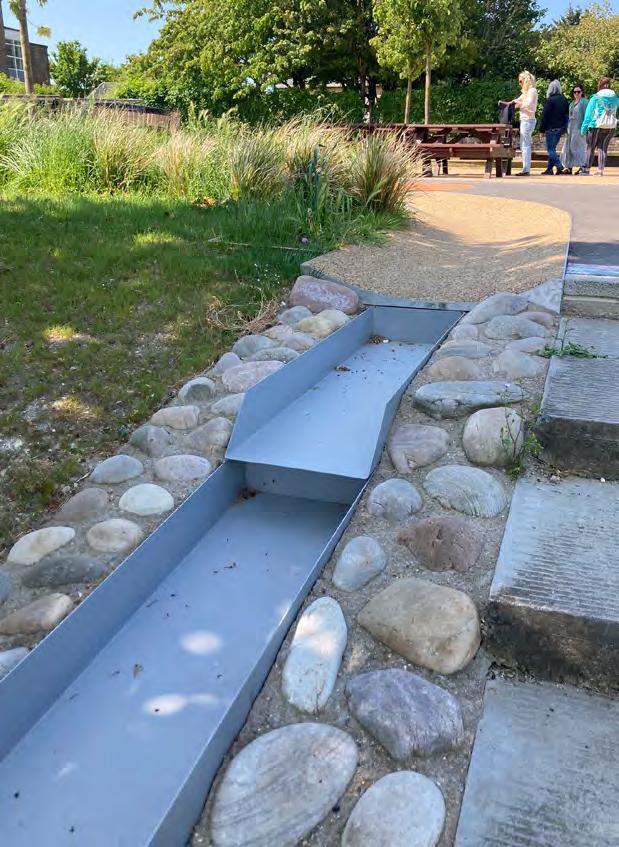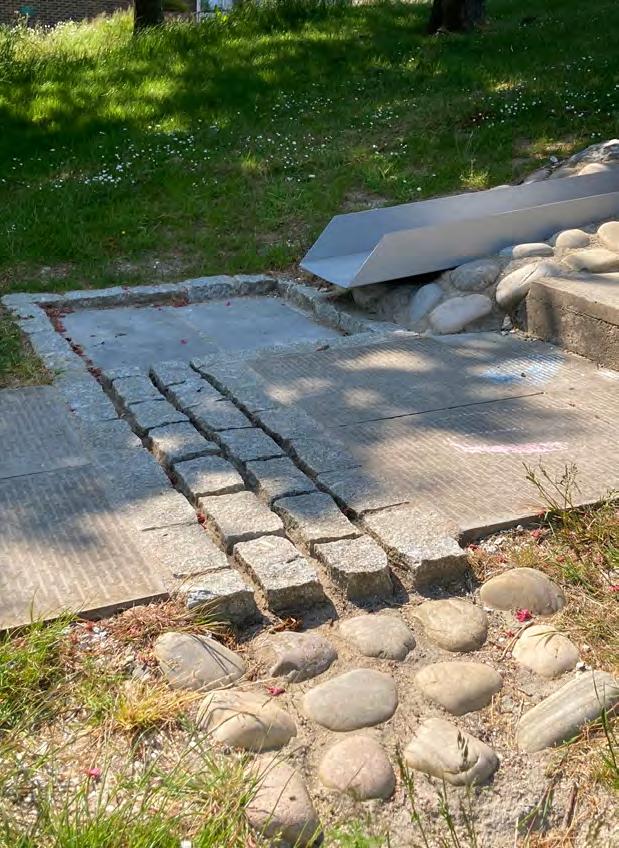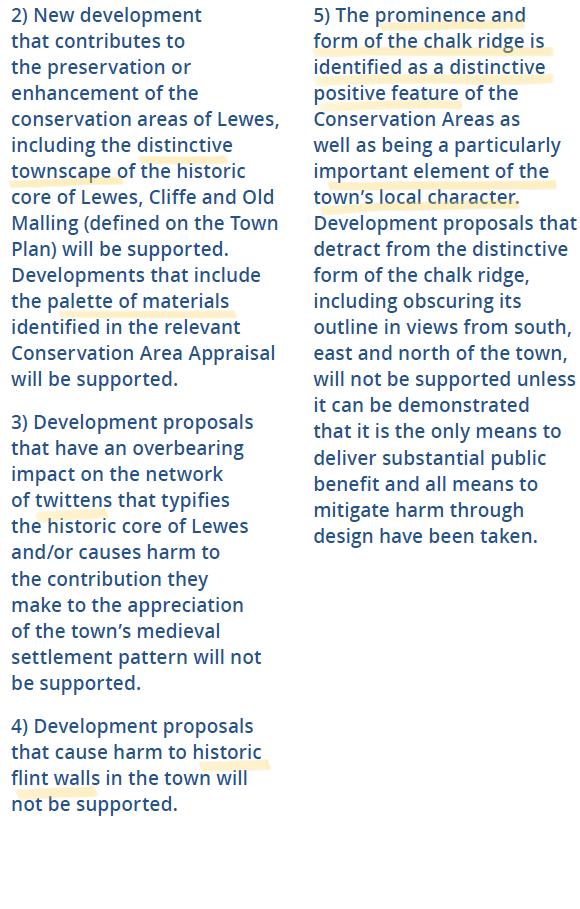
1 minute read
Townscape
Policy Review
Townscape NDP policies make a strong statement of what new development should prioritise: the most significant views of landmarks within the town and surroundings. It adopts a landscape-based approach, which I support insofar as it embraces the connection (mainly visual) of the urban space with the countryside, partly creating a physical environment for sense of place.
Advertisement
Notwithstanding this, the town is perceived by all senses and not only visually, which is the emphasis of this and most planning policies. Whilst we obtain most of our information through vision, the acoustic space helps in emphasising space, instead of objects. Smells, taste and texture are emotionally rich. All of these are absent in planning policy, yet they contribute to how we perceive the environment.
It is also my view, that the ‘social construction’ of the townscape and its character is sometimes missing. Again, policy focus much on the visual aspect of the ‘observed’ elements, but it does not mention the necessary ‘observer’, which varies in time, age, occupation, background, and gives meaning to what they observe, resulting in a variety of emotions. The observer will give meaning to place through their own perception.
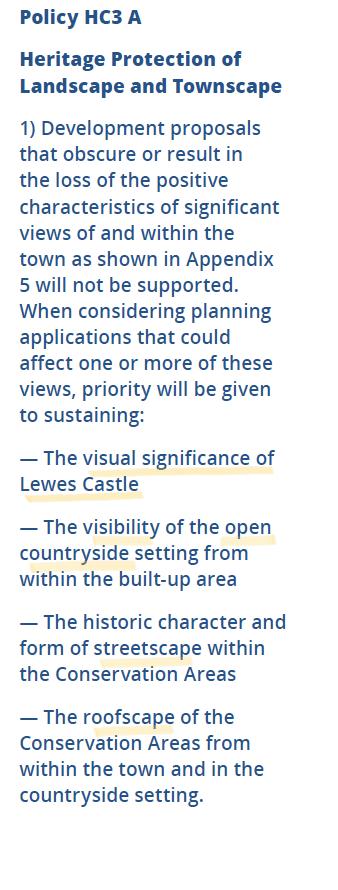
TAKEAWAY
I advocate for a more diverse approach to the perception of place, in this case landscape/ townscape, which includes other senses and focuses too on the subject who co-creates the identity of that place together with the elements that conforms the town.
Precedent
Wallands Primary School Rainscape is a sustainable drainage system retrofitted in the outdoor space of a school in Lewes. The design not only manages rainwater sustainably but also creates multiple sensorial and play opportunities. The drainage design is not only a positive element visually, but it is an experience for adults and children. Water can be reached by hand, it can be intercepted and interrupted, diverted, encouraging play and interaction between people and place. Water can also be experienced through sound as it falls on the ground and runs on a toboggan, from hard to soft surfaces. In this case, it has also resulted in a mix of surfaces that range in texture, emphasising touch.
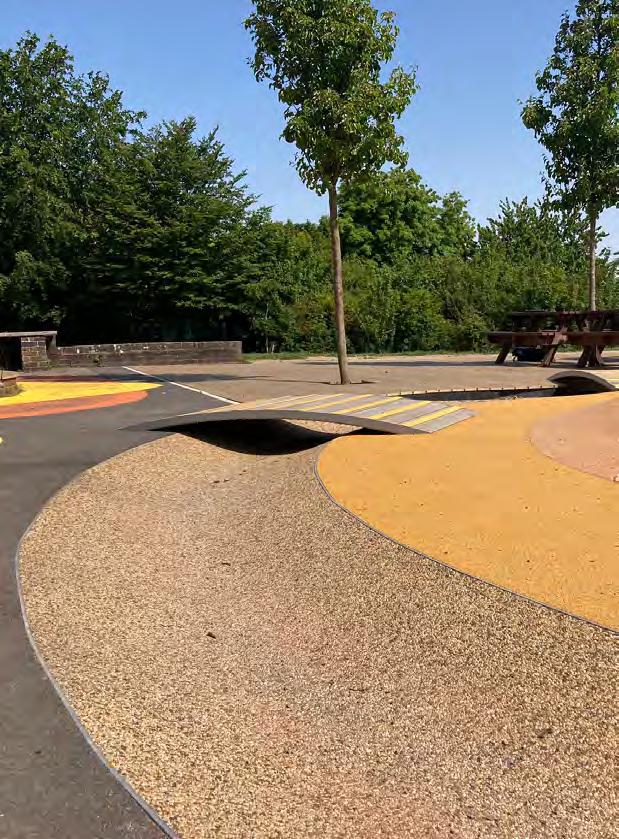
Considering water is very important in Lewes, a town which is defined by its relationship with water, the River Ouse, its tributaries and the sea. Embracing water in the design would make the project speak of its place. When accompanied cumulatively with visual and other sensorial experiences, Lewes could maximise the potential for strengthening what makes it special.
All of these experiences of place contribute to what constitutes the landscape. It is not just what can be seen, but what can be perceived. A visual bias in the planning policy is understood, but not necessarily the only way to fully describe and construct place.
